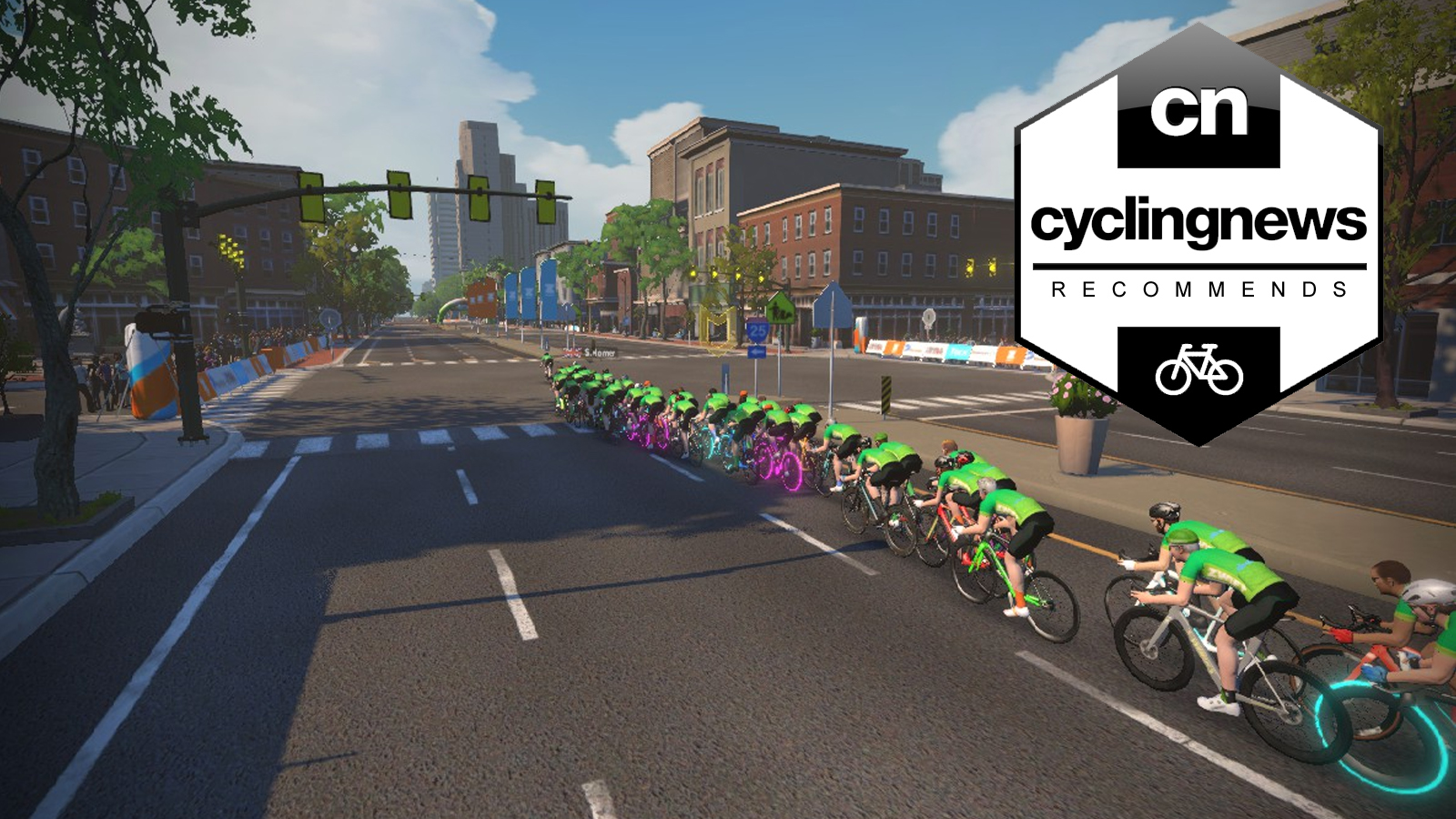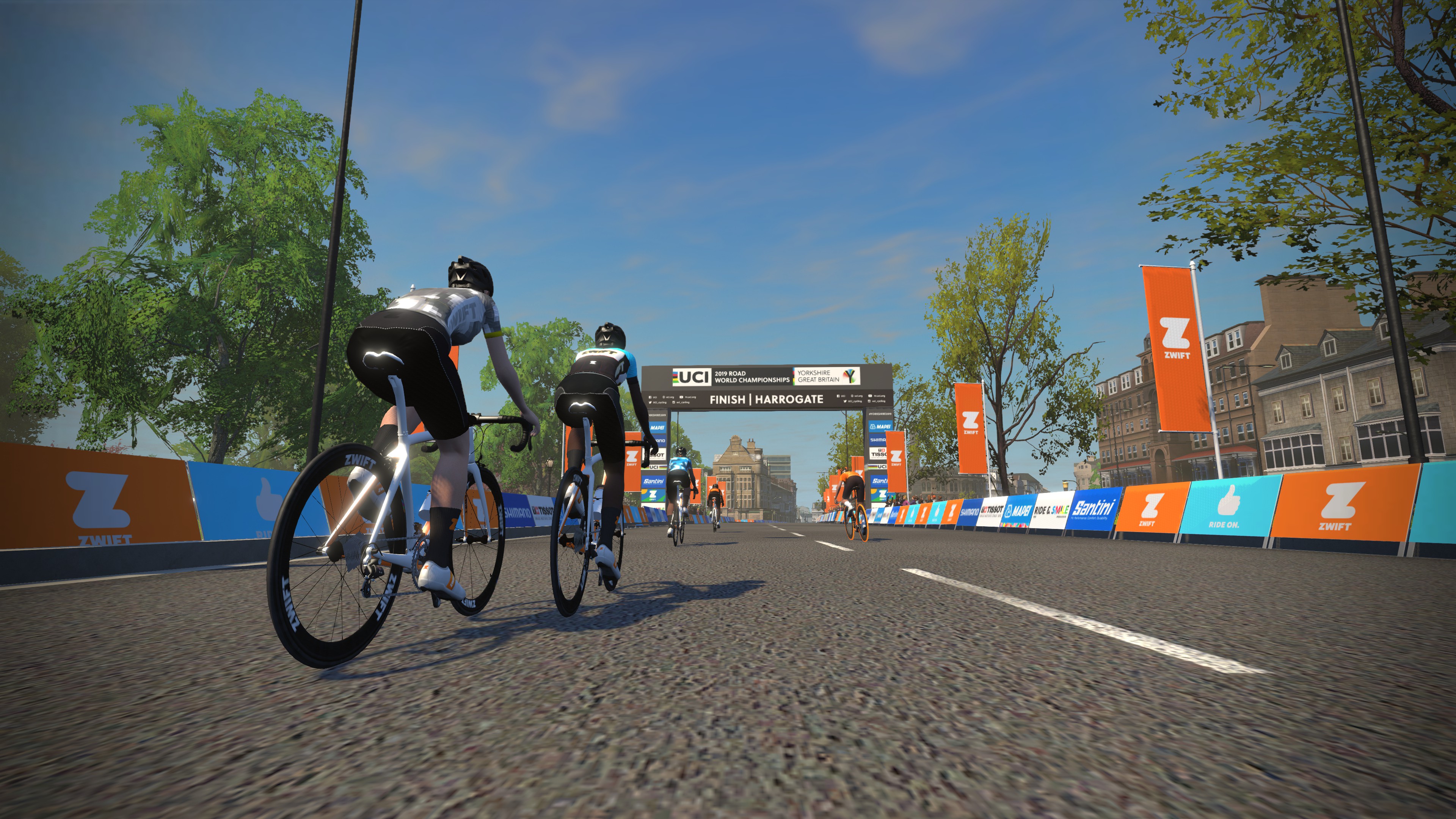Zwift vs Peloton: An indoor cycling head-to-head
We analyse the differences between two of the best indoor cycling apps on the market, Zwift and Peloton, and help you decide which is best for you

Zwift and Peloton are considered two of the best indoor cycling apps for good reason. Both platforms offer a variety of challenging workouts, community events, and colourful entertainment to keep you going on what used to be a horribly boring indoor trainer.
While Zwift and Peloton have a lot in common, they are also separated by a number of key differences. Here we’ll take a look at both indoor training platforms, their similarities and differences, and how to decide which platform is best for you.
- Check out our guide to the best turbo trainers
- You might also like our how-to guide on achieving the cheapest Zwift setup
- Or for those who prefer a dedicated setup, have a look at the best exercise bikes
Zwift vs Peloton head-to-head

Zwift
Specifications
Reasons to buy
Reasons to avoid
- Zwift: your ultimate guide
- Zwift compatible trainers: Smart trainers that can be used with indoor cycling apps
- Zwift with a power meter and dumb trainer
Zwift is, by far, the most popular indoor training platform amongst serious cyclists. The virtual roads of Watopia were first launched in 2014, and has amassed over 1.1 million subscribers in its time. What really makes Zwift shine is its massive community, and thus, the success of its daily and weekly events.
You can also race on Zwift as well as participate in group rides 24/7/365. Riders of all abilities are welcome, with each category being designated by FTP in watts per kilo (w/kg). These races and group rides attract thousands of riders from around the world, each and every day. Pro riders, celebrities, and indoor specialist teams even organize their own group rides and workouts – one recent event was the L’Etape du Tour which attracted hundreds of thousands of riders during the Virtual Tour de France.
In Zwift, each rider has their own customizable avatar that spins along the roads of Watopia. You can customise your avatar, their kit, helmet, gloves, shoes, bike, and wheels – many of which are only available once you reach a certain level. Speaking of levels, you start at Level 1 on Zwift, and accumulate level-up points (XP) by riding more kilometres, earning route badges, and climbing some of the biggest cols in the virtual worlds. Then there's the whole Zwift powerup aspect, too.
The platform also has a massive library of Zwift workouts and Zwift training plans that cover everything from gravel grinders to crit preparation. You can find a workout to fit just about any timeframe and intensity, including but not limited to: sprints, sweet spot, threshold, cadence ladders, tempo, micro-bursts, over/unders, and more. As with races and group rides, there are also group workouts available.
The best way to interact with others on Zwift is via the Zwift companion app, a free app available on iOS and Android where you can send and receive messages, sign up for events, and connect with other users.
Get The Leadout Newsletter
The latest race content, interviews, features, reviews and expert buying guides, direct to your inbox!
Set up is fairly simple – you can connect to Zwift via a smart trainer, or an external power meter and ANT+ or Bluetooth. Even better for budget-strapped cyclists, you can connect to Zwift without a power meter if you have just a speed and cadence sensor.

Peloton
Specifications
Reasons to buy
Reasons to avoid
- Peloton: is it worth it?
Before jumping into the details of Peloton, it is important to mention that you can use the Peloton app – called Peloton Digital – without owning the Peloton Bike or Bike+ which will put you back £1750/£2295.
Peloton Digital costs the same as Zwift at £12.99 per month, and has much more to offer than just virtual spin classes. Peloton Digital also includes access to classes in yoga, stretching, strength training, high-intensity interval training (HIIT), running, and meditation. As a whole, Peloton is the better all-round fitness app thanks to its off-the-bike training and recovery classes. Many studies have shown that strength training helps lessen the chance of overuse injuries in cycling, and meditation has been shown to improve mental health across the board – less stress, clearer mind, and better performance.
All Peloton classes are led by professional instructors – real-life people, not avatars – who offer advice, motivation, and encouragement to the tune of a variety of background music. As opposed to Zwift’s power-based parameters, Peloton is much more forgiving in its intensity and instruction. Users can alter the intensity of each workout, with the ultimate goal being the endorphin-fueled feeling of working out, rather than hitting a certain watts per kilo.
Live classes aren’t available 24/7/365 – the instructors have to sleep too! – But thousands of archived video workouts are available on the app at any time.
- Best heart rate monitor for Zwift
- ZwiftPower: Your ultimate guide
Zwift versus Peloton – Which do you choose?
One of the biggest differences between Zwift and Peloton is the visual aspect. When you’re sitting on the indoor trainer, there’s not much to look at besides the wall; so whatever’s on your screen is going to be very important. Zwift surrounds you with a virtual world, including real-world models that transport you to Virginia, France, Austria, and more. You have your very own avatar on the screen that you can see pedalling away, who will even match your cadence, and get out of the saddle when you do. It’s like watching a little ‘me’ riding in a virtual world.
Zwift offers a variety of gamified features that attempt to keep the user engaged and entertained. Most of us, including myself, appreciate the attempt, but it’s not quite enough. Especially if you’re spending more than an hour on the trainer each day, you’re still just staring at a make-believe world on a screen. I always find myself listening to music or a podcast, or watching bike racing in the background.
On the other hand, Peloton’s real-world environment completely engulfs the user with music, visuals, and the element of human interaction. While the instructor isn’t actually in the room with you, it really feels like they are. Peloton adds in the human aspect that is completely lacking in Zwift. While Zwift surrounds you with more stuff – the avatars, the roads, the group rides and gadgets and gizmos –
Peloton is just more real. On the other hand, Zwift offers far more riding variety than Peloton. The virtual worlds of Zwift are almost endless – it would take you weeks, maybe even months, to complete every route. And with a library of over 2000 workouts, it’s almost impossible to run out of options in that department too. Now add in group rides and races available 24/7, and the options are endless. For serious cyclists looking for a taste of everything – group rides, endurance workouts, hard races, and high-intensity interval training –
Zwift has it all. Peloton is more for the casual cyclist who uses a bike ride as workout. There aren’t a lot of people – if any – who will jump on the Peloton bike for a two-hour endurance ride. But in Zwift, you see riders doing 50, 80, even 130km rides every day. Peloton is more engaging in that you have a real-life person coaching you through each and every workout. The beat is fast, the workouts are challenging, and your instructor will be with you every step of the way. Peloton is the perfect way to bring the real-world experience into the comfort of your own home.
Zach is a freelance writer, the head of ZNehr Coaching, and an elite-level rider in road, track, and e-racing. He writes about everything cycling-related, from buyer's guides to product reviews and feature articles to power analyses. After earning a Bachelor’s Degree in Exercise Science at Marian University-Indianapolis, Zach discovered a passion for writing that soon turned into a full-fledged career. In between articles, Zach spends his time working with endurance athletes of all abilities and ages at ZNehr Coaching. After entering the sport at age 17, Zach went on to have a wonderful road racing career that included winning the 2017 Collegiate National Time Trial Championships and a 9th place finish at the 2019 US Pro National Time Trial Championships. Nowadays, Zach spends most of his ride time indoors with NeXT eSport.